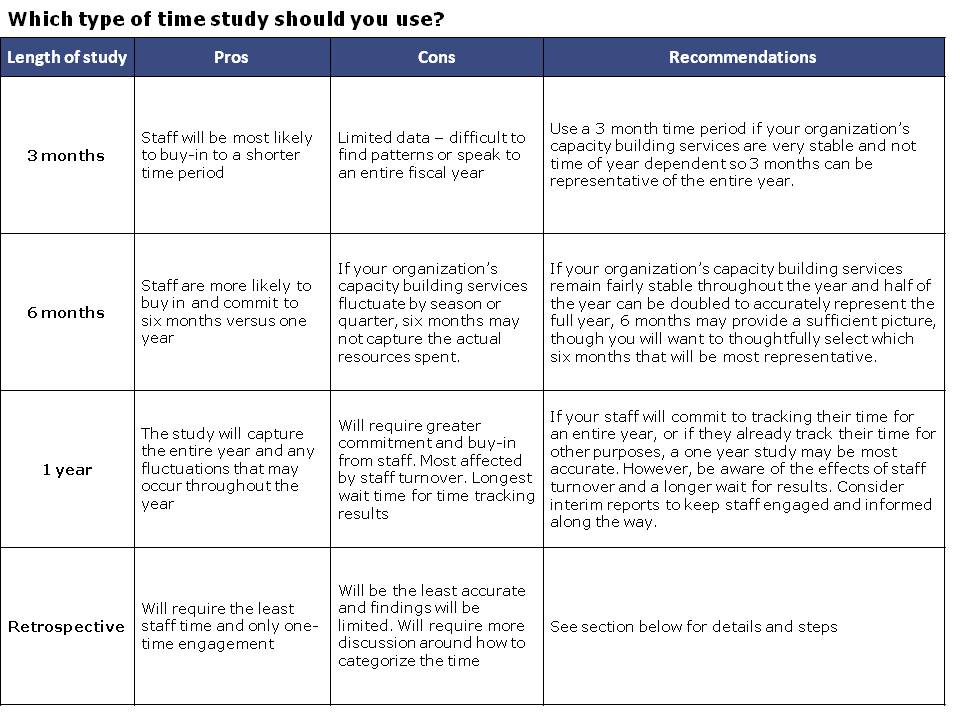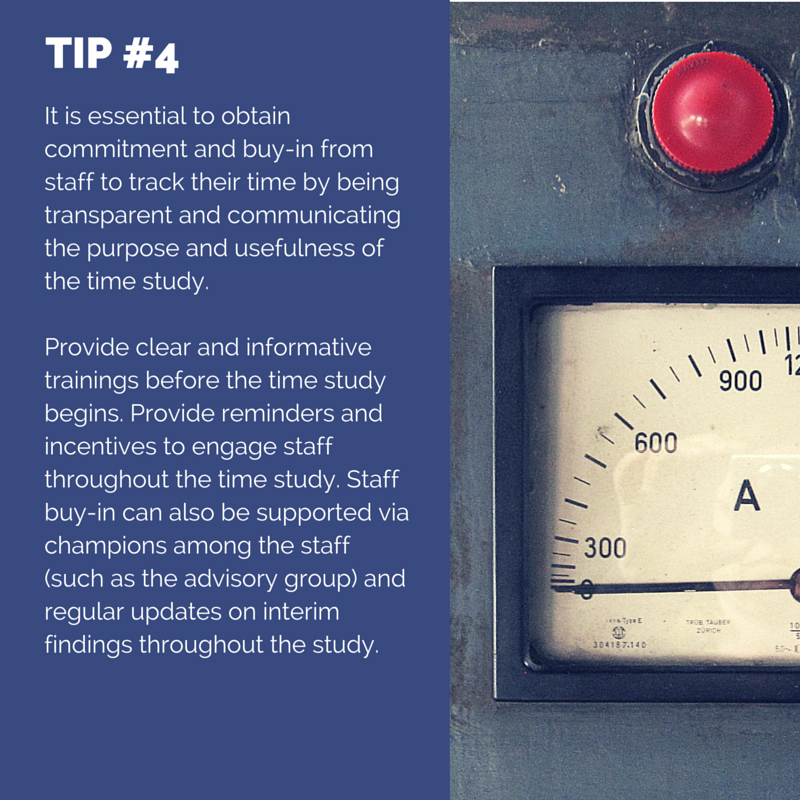Calculate Resources Spent on Capacity Building
How much time and direct expense do you spend on capacity building?
Depending on how you provide capacity building to your grantees and contractors, there are likely to be two main types of capacity building expenses: budgeted costs and staff time.
You can either collect staff time data in real time or in a retrospective time study.
Budgeted Costs
If you are interested in understanding the full budgeted cost (staff costs and direct expense costs) for capacity building activities, you may consider conducting a budgeted cost analysis in combination with a staff time study by following Checklist #4.
A budgeted cost analysis can help you learn:
- The amount of direct expenses (i.e., consultants, parking, food, etc.) spent on capacity building
- The amount of total staff expenses spent on capacity building
- Total cost for capacity building
Download Checklist #4
How to analyze budget costs
Real-Time Time Study
If your staff spends a significant amount of time providing support to grantees and contractors, you may consider conducting a time study. A time study involves tracking the amount of time staff spend on capacity building activities. The study can be modified in length (e.g., tracking time for three months versus one year) and level of detail (e.g., tracking time by activity, program, mode) depending on your learning objectives and the willingness and ability of staff to cooperate.
A time study can result in very useful information but depends highly on the commitment and dedication of staff to providing quality data. This should be thoughtfully considered when setting up the parameters and requirements of a time study. A time study can also help you learn the following:
- Capacity building time spent overall, by role or department, and even by individual
- Specific capacity building time spent overall, by role, department and/or individual
- Which capacity building activities require more or less staff time
- Activities can be broken down by topics or methods of administration or both, depending on the level of detail you are interested in studying
- Which time periods throughout the year are more capacity building intensive (e.g., months or quarters), which can impact budget and staffing decisions
- Are some months more capacity building intensive than other months?
- Is there a random ebb and flow or is there a more distinct pattern of intensity?
- Other questions: _________________________________
The categories and activities utilized for the time study should match the definitions developed during Step One. Click here for a sample time tracker used by the LA County Arts Commission when we conducted this assessment.
Use the table below to decide on the best time period for your study and then use Checklist #5 to conduct a time study.

Download Checklist #5
How to conduct a real-time time study
Retrospective Time Study
If your organization is not able to conduct a real-time time study as described in the previous section, a retrospective time study may be able to provide similar information with some limitations. A retrospective time study would rely on staff’s recollection of their work over a certain time period and would have limited application. The results from a retrospective study should be used cautiously. If this is your only option, the following Checklist #6 may encourage higher accuracy and help yield some useful information.
Download Checklist #6
How to conduct a retrospective time study
CONTINUE TO OTHER STEPS
Establish assessment purpose and common definitions
Evaluate the impact of your capacity building
Share and use your assessment results


